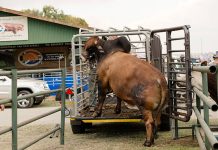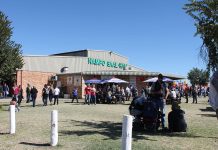The price of farm requisites has increased sharply since 2006. According to Grain SA’s 2007 annual report, the international rand price of urea increased 16% from October 2005 to 2006, and 40,5% from 2006 to 2007. Over the same periods, the price of diammonium phosphate increased 9,7% and 57,6%.
These increases were mainly caused by higher world prices, as the rand only weakened marginally from October 2005 to 2007. The sharp increase in the Brent crude oil price caused the local diesel price to increase sharply from R5,36 in 2005 to R6,79 in 2007, and since then fuel prices have risen even more.
Livestock producers also face higher prices. Higher grain prices have increased the price of concentrates and balanced rations. The price of dairy meal increased by over 80% from 2005 to end 2007. Since October 2007 the rand has weakened by another 19% to over R8 to the US dollar, which will result in still higher input prices.Although agricultural product prices have also increased sharply since mid-2006, in most cases, this wasn’t enough to keep up with the increase in input prices.
The way forward
It’s projected that the increasing trend for input prices will continue, and may even accelerate. Eskom’s demand for a 53% tariff increase, a diesel price exceeding R9/â„“ and higher interest rates aggravate the problem.Consumers, hard-hit by the increase in food and fuel prices and higher interest rates, also face higher property taxes and electricity bills. As a result, the chances of further increases in food prices without a decrease in demand have weakened considerably. There’s little doubt that in the next year or two farmers will face a serious cost/price squeeze.
There are only two ways of handling such a squeeze – either increase income or reduce cost. If farmers increase their gross income by R1, at best it will improve their bottom line by 10%. However, if they cut costs by the bottom line will improve by the full R1.
The trick is to cut costs without doing irreparable damage to current and future production. Good housekeeping and limiting waste goes a long way towards this. few years ago when fruit exporters first had to comply with EurepGap rules, there was a lot of moaning, but in time they realised its strict controlled use of chemicals resulted in cost savings.
Strict stock control also limits pilferage and prevents your employees from using expensive detergents for their own laundries, or diesel fuel to light fires.
Modern technology can enable a farmer to increase production without increasing costs, or to produce the same quantity at a lower total cost. Unfortunately, technology usually requires huge capital investment.
While grain producers know they can save on lime and fertiliser with precision farming equipment, the capital investment needed is too high, particularly for smaller producers. Luckily the number of contractors who use precision farming methods has increased in the last year or two.
Genetically modified seed is an exception. This technology is scale-neutral and all farmers, even small-scale and emerging producers, can afford it. In fact, the benefits are more evident for emerging farmers than commercial ones.
Cost savings start with buying inputs. The time when farmers relied on their cooperatives to manage procurement on their behalf is long past. Today most agribusinesses are more interested in shareholder’s profits and executive bonuses than in providing farmers with inputs at reasonable prices.
Frequently different agribusinesses in the same town will ask hugely different prices for the same product. Buying groups, organised around study groups or as formal cooperatives and companies, can save farmers huge amounts of money. There are many successful practical examples.
Biological farming principles also present opportunities for huge cost savings. The effective use of farm manure to replace chemical fertiliser saves money and improves soil fertility. Farming in cooperation with nature is more cost-effective than farming against it. In most cases this requires a rethink for farmers. The use of well-designed crop rotation that includes legumes can save a lot on fertiliser and limit the use of chemicals.
Expenses worth keeping
However, there are some expenses farmers should not cut. If you try to save on essentials like proper plant and animal disease control, preventative vaccination, fertiliser and animal feed, you’ll find your loss of income will exceed your savings.Farmers will face a lot of challenges during the following year or two, but the global food situation remains positive. Those farmers who manage to keep cost under control will still earn reasonable profits.
Dr Koos Coetzee is an agricultural economist for the MPO. All opinions expressed are his own and do not reflect MPO policy. |fw








